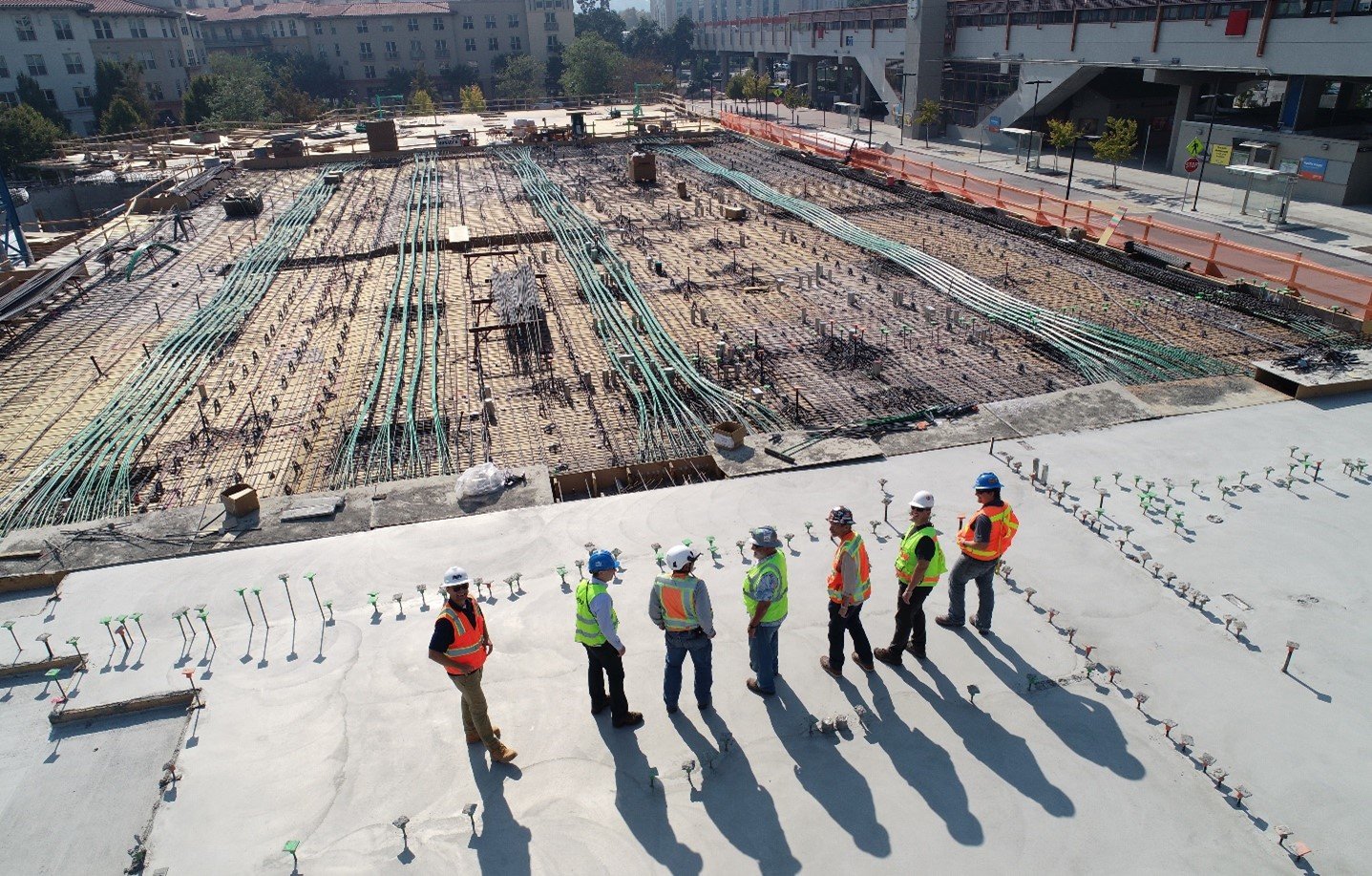Capital allowances give businesses and commercial property investors access to generous tax reliefs to enhance their tax savings and minimise capital expenditure costs. With many companies still not utilising these allowances, we explain the different types of capital allowances available and how your business can claim them.

The tax advisory division at PKF Smith Cooper has recently expanded. We now provide a specialised capital allowance tax service to help businesses and commercial property investors utilise tax reliefs and reduce their capital expenditure liabilities. Few accounting firms outside the ‘Top 6’ have a dedicated capital allowances specialist and the addition of our capital allowances consultant Thomas Webb to our expert tax team has enabled us to enhance our service offering for the benefit of our clients.
Due to the complex nature of capital allowances, many businesses are often unsure, or unaware, of the various tax reliefs available or how to claim them. It is estimated that 96% of UK businesses are either under-claiming on their capital allowance entitlement or not claiming at all. This results in over £70 billion of pounds of tax relief being left unclaimed in the UK.
In this article, we take a closer look at the different types of capital allowances available, who can claim them, and the benefit of claiming capital allowance tax reliefs for businesses.
What are capital allowances?
Capital allowance is a broad and often complex area of tax, providing statutory/legislative tax relief, which is supported by over 100 years of case law. Simply put, capital allowances consist of tax reliefs on various types of plant and machinery assets that your business may acquire within your trade. These reliefs can be claimed against your taxable profit, resulting in more cash for your business. Certain capital expenditure incurred while acquiring, building, fitting out or refurbishing commercial property can also be tax-deductible.

What qualifies as capital allowances?
Despite there not being an approved list of qualifying items, businesses can claim capital allowances on a vast range of expenditures. Common assets that typically qualify for capital allowances include:
- cars and vans
- furniture
- machinery and equipment
However, different types of assets are subject to different requirements and tax relief rates. Expenditure relating to ‘plant and machinery’ and ‘structures and buildings’ assets are the two main types of capital allowances:
Plant and machinery allowances – focused on the costs of acquiring business equipment and fixtures for a commercial property.
Structures and buildings allowances – cover expenditures on constructing and renovating commercially owned premises.
In addition, there are several types of intangible assets that can also be claimed under capital allowances, including research and development (R&D). If your business is planning to invest, or has recently invested, in innovation, you can claim R&D tax reliefs on incurring qualifying capital expenditure. Alongside capital allowances, a R&D specialist will be able to provide detailed advice on your entitlement.
Who can claim capital allowances?
Capital allowances are also available to UK income or corporation taxpayers. This means the relief can be provided from 19% up to 45%. Almost all businesses can benefit from capital allowances in some form, but many companies do not claim them effectively.
If you are a business owner, contact our capital allowance tax specialists who will provide specialised advice regarding your capital allowance and carry out an initial assessment of your capital expenditure.
How to claim capital allowances
The way in which you claim capital allowances will greatly affect the maximum amount of relief you can gain, and how quickly you will receive it. There are four main methods to claim capital allowances:
Plant and Machinery Allowances (Writing Down Allowances)
Typically used when assets do not qualify for AIA or FYA, the Writing Down Allowance (WDA) enables your business to offset a percentage rate every year on assets you own until the total value has been claimed. WDAs can also be used when the maximum AIA limit has been reached.
To utilise WDAs, assets must first be categorised into pools, which will determine the rate that can be deducted. There are three main pools that your assets will apply to:
- Main Rate Pool – These are commonly referred to as plant and machinery allowances. The rate of relief is 18%.
- Special Rate Pool – These are known as integral features and were introduced in 2008. Certain assets that would fall within the main rate pool, if they are deemed to be long-life assets, would fall within the special rate pool. The rate of relief is 6%.
- Structures and buildings allowances – expenditure that does not fall within the above on the construction or refurbishment of a building. There are statutory provisions that prohibit expenditure treated as main or special rate pool under structures and buildings allowances. The rate of relief is 3%. (on a straightline basis)
Due to their complexities, many businesses struggle to understand the different pools and their corresponding rates. Contact our capital allowances team who will offer expert guidance to ensure you remain compliant and claim correctly.
Annual Investment Allowance
The Annual Investment Allowance (AIA) allows businesses to deduct 100% of the cost of commercial assets against their profits before tax is calculated.
In a surprise move, the government announced in the Autumn Statement that the rate was to be permanently set at £1m from 1 April 2023 instead of reverting back to the pre-planned level of £200,000.
First-year Allowance
Like AIA, the First-year Allowance (FYA) also includes a 100% deduction on the cost of assets on profits before tax calculations. Where FYA differs from AIA is that there is no limit on how much a business can claim. If your business reaches your AIA limit, you can reduce your tax bill further through FYA.
The most frequent FYAs claims are related to research and development (research and development allowances) and electric car charging points.
Land Remediation Relief
Land remediation relief sits outside of the capital allowances legislation, as a corporate tax relief. This relief is available for corporate tax only, however it covers both capital and revenue expenditure, meaning that developers can benefit from the relief.
Where relevant land remediation has taken place, the tax relief available is 150%. This provides a relevant tax saving in the year of 28.5% (19% corporate tax rate), rising to 37.5% with the increase in corporation tax from 1 April 2023
What are Super Deduction and Special Rate capital allowances?
Introduced on 1 April 2021 as a relief available to corporate tax only, super deduction and Special Rates (SR) allowances provide a first-year allowance of 130%. This means that if you spent £10,000, you would receive £13,000, and a tax saving of £2,470 instead of £1,900. However, from 1 April 2023 the super deduction and SR reliefs will no longer be available.
The withdrawal of the relief is complex and where an accounting period straddles 31 March 2023, the 130% is reduced. Therefore, it is imperative that you discuss your super deduction and SR entitlement with a capital allowances specialist as soon as possible to ensure that these reliefs are maximised and accurately calculated.
For further information, our recent capital allowances insight explains how the Super deduction and Special Rates reliefs work and how you can claim them.

The benefits of claiming capital allowances
Regular investment is integral to the success of a business. Claiming capital allowances helps your business to reduce the amount of tax payable on your profits and increase your cash flow, which makes way for further investment in your business.
Many businesses do not fully understand their capital allowance entitlement and therefore miss out on valuable tax incentives. By taking advantage of capital allowances, you can effectively write off the cost of certain assets over a period of time.
What’s next for capital allowances?
Reflecting on the current capital allowances landscape Thomas Webb, Capital Allowances Consultant at PKF Smith Cooper, stated: “Capital allowances remain as relevant today as they ever have. Firstly, with the rise in corporate tax to 25%, the value of any allowances in your business increases. As the super deduction expires from 1st April 2023, now is the time to take advantage of the financial benefits it offers. The first year allowance can really help accelerate a reduction in your tax liabilities, however it is important to ensure that any claims are compliant and robust, and there is the administration side of claims to consider – this is where a specialist can add value.
“Given the government’s capital allowances consultation in 2022 and potential reforms suggested, it will be interesting to see if the upcoming Spring Budget brings about any changes. In my opinion, providing a first year allowance would be a welcome addition and provide an equivalent to the super deduction. With the super deduction, the UK’s capital allowances regime was one of the best for tax relief in Europe – without the relief, the UK risks languishing near the bottom.
Thomas added: “Other issues I would like to see addressed by the government are sustainability and cladding. No action has been taken on the sustainability front since the enhanced capital allowances on energy saving plant and machinery were phased out in April 2018 (ceasing to qualify from 1 April 2020) so it will be interesting to see if the government introduces an incentive for companies with net zero targets. Post-Grenfell, the government has taken the route of force with freeholders over incentive when it comes to contractors and cladding removal, and maybe it’s time for a different approach, perhaps by allowing the relief to qualifying via the land remediation regime.
“Capital allowances can be quite straightforward but they can also be incredibly complex. I strongly recommend chatting through your position with a specialist capital allowances advisor to ensure that you are best placed to maximise allowances available.”
Thomas Webb, Capital Allowances Consultant, PKF Smith Cooper
How PKF Smith Cooper can help
There is no denying that capital allowance is a complicated area of tax that requires specialist knowledge to navigate successfully. This is where we can help.
Here at PKF Smith Cooper, our capital allowances team has the experience and expertise to ensure your business claims its full capital allowance entitlement. We understand that every business has different needs and objectives, which is why we provide specialised capital allowance support that is tailored to your company.
Want to find out more about the capital allowances your company may be entitled to? Contact us today to arrange a consultation call with our team of capital allowance experts.




